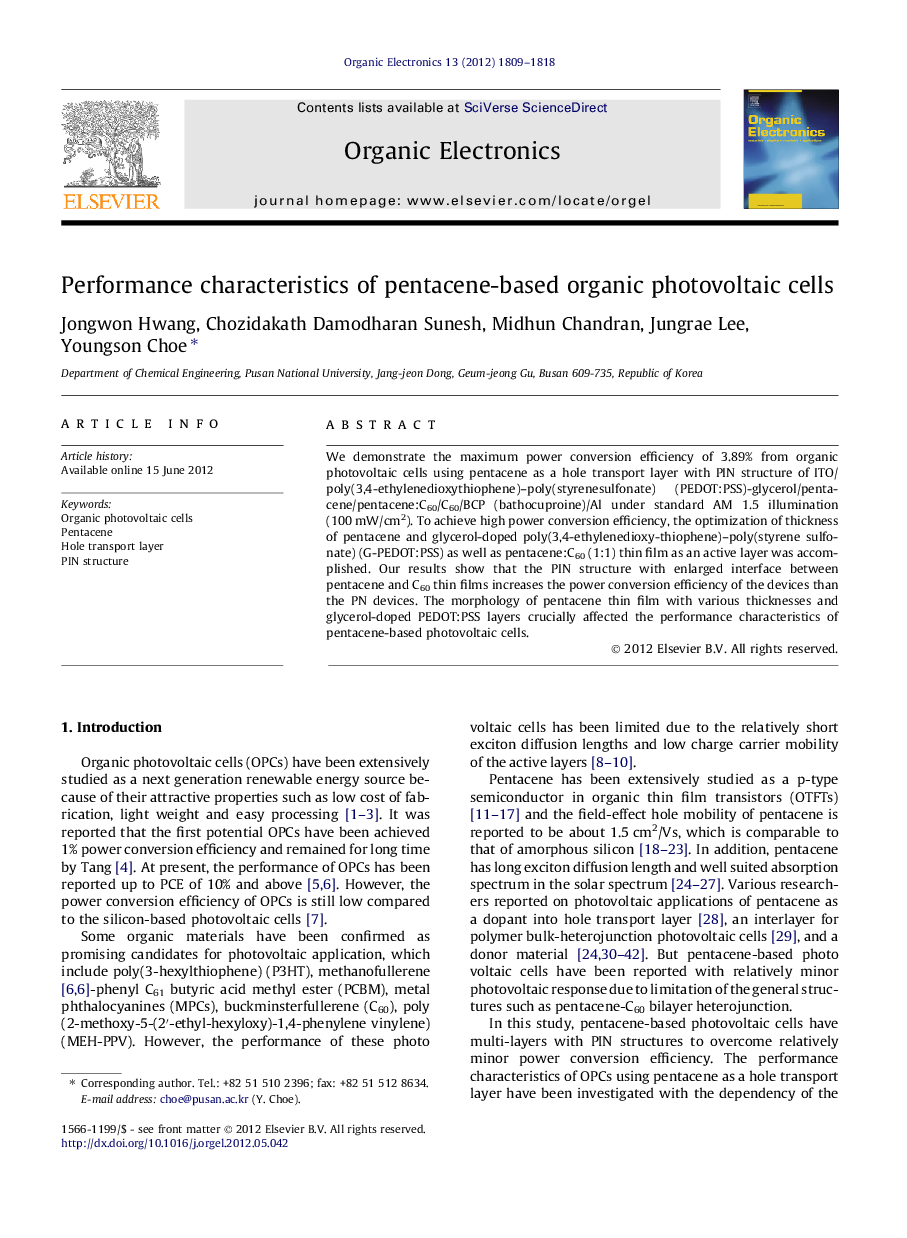| Article ID | Journal | Published Year | Pages | File Type |
|---|---|---|---|---|
| 1267348 | Organic Electronics | 2012 | 10 Pages |
We demonstrate the maximum power conversion efficiency of 3.89% from organic photovoltaic cells using pentacene as a hole transport layer with PIN structure of ITO/poly(3,4-ethylenedioxythiophene)–poly(styrenesulfonate) (PEDOT:PSS)-glycerol/pentacene/pentacene:C60/C60/BCP (bathocuproine)/Al under standard AM 1.5 illumination (100 mW/cm2). To achieve high power conversion efficiency, the optimization of thickness of pentacene and glycerol-doped poly(3,4-ethylenedioxy-thiophene)–poly(styrene sulfonate) (G-PEDOT:PSS) as well as pentacene:C60 (1:1) thin film as an active layer was accomplished. Our results show that the PIN structure with enlarged interface between pentacene and C60 thin films increases the power conversion efficiency of the devices than the PN devices. The morphology of pentacene thin film with various thicknesses and glycerol-doped PEDOT:PSS layers crucially affected the performance characteristics of pentacene-based photovoltaic cells.
Graphical abstractFigure optionsDownload full-size imageDownload as PowerPoint slideHighlights► The performance characteristics of pentacene-based photovoltaic cells with PIN structures have been investigated. ► Focus on the dependency of pentacene thin films thicknesses with morphology. ► The power conversion efficiency of 3.89% is achieved.
